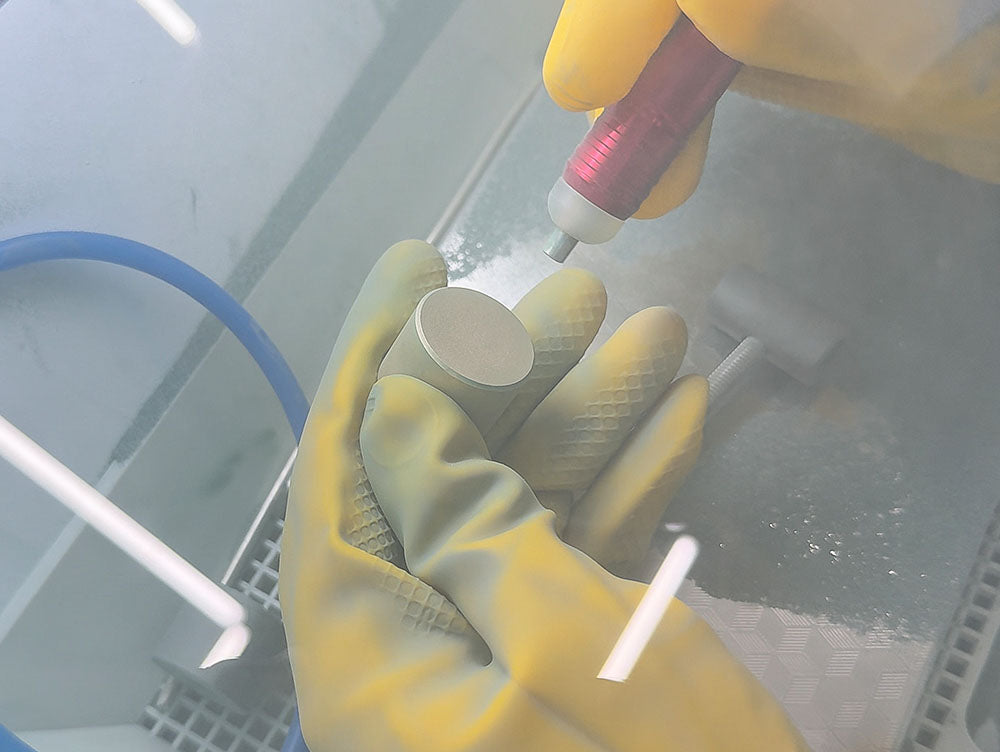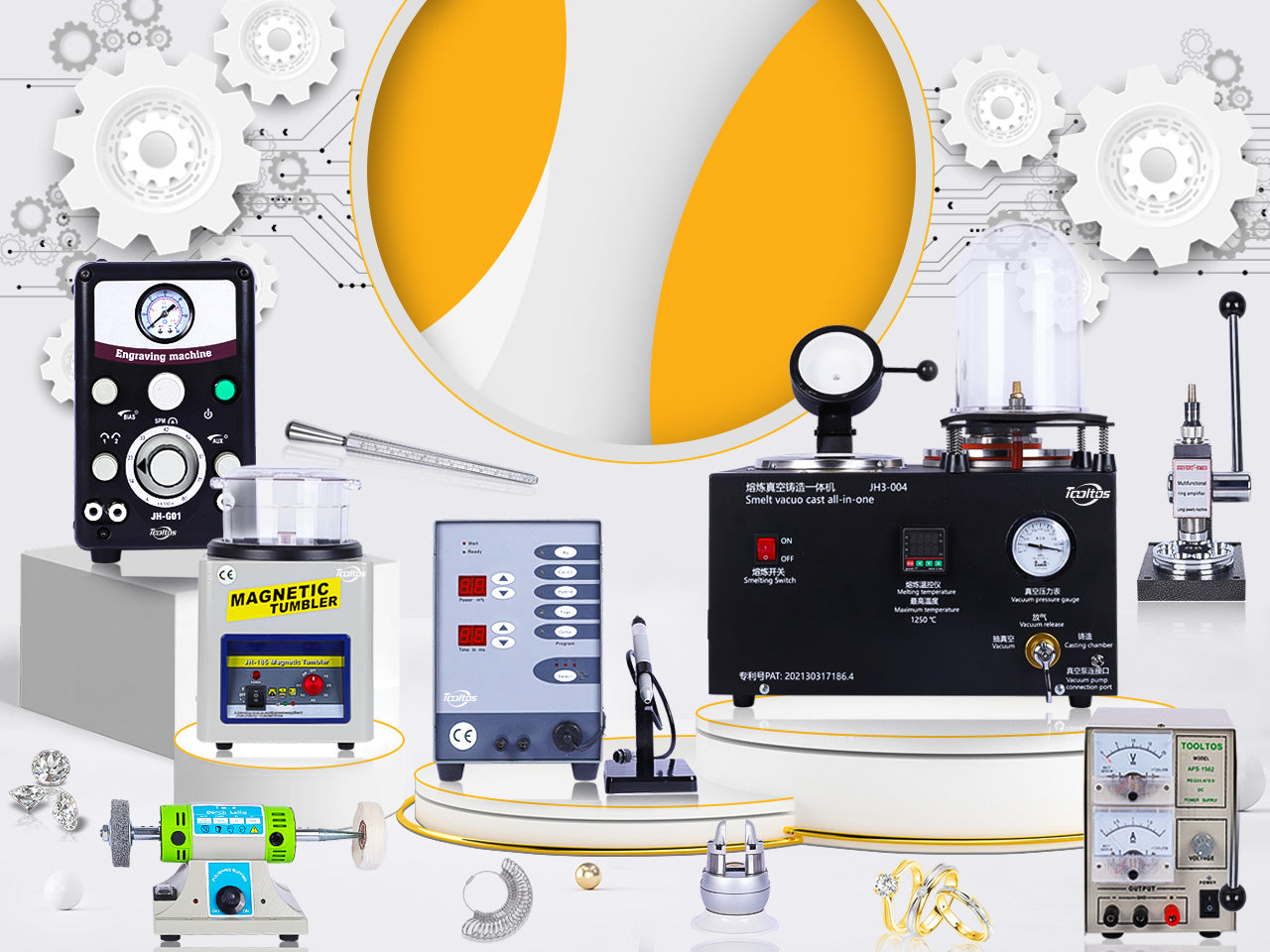Jewelry sandblasting is a versatile finishing technique that uses high‐velocity abrasive media propelled by compressed air to texture, clean, and prepare metal surfaces. By selecting the right combination of media, pressure, and equipment, jewelers can achieve finishes ranging from uniform matte to deep satin textures, remove casting flash, prep surfaces for plating or patinas, and even selectively clean filigree and undercuts. Below is a detailed look at how jewelry sandblasters operate, the components involved, and their primary uses in a professional workshop.
Principles of Operation
Key Components
-
Blasting Cabinet: An enclosed chamber fitted with view window, rubber arm gloves, and interior lighting. Cabinets often include a media recycling nozzle to separate reusable particles from dust.
-
Compressor: Provides the high‐pressure air source. For fine jewelry work, compressors rated around 9.5 cfm @ 90 psi are commonly used, though lighter textures may only require 40–60 psi.
-
Nozzle & Gun: A Venturi or direct feed gun converts compressed air into a vacuum that draws media into the airflow, blasting it at the workpiece. Nozzle materials (ceramic or tungsten carbide) impact longevity.
-
Abrasive Media: Common media include glass beads (50–150 µm), aluminum oxide (fine grit), and silicon carbide. Media choice dictates finish: glass beads for smooth matte, aluminum oxide for light etching, and coarser grit for deeper texture
Blasting Mechanics
-
Vacuum Draw: Compressed air passes through the gun’s Venturi throat, creating low pressure that draws media from a hopper.
-
Acceleration: The media mixes with high‐velocity air in the nozzle, accelerating toward the workpiece.
-
Impact & Rebound: Upon hitting the metal surface, media particles remove microscopic layers, producing a uniform texture. Rebound media is collected at the bottom of the cabinet for recycling.
Media Characteristics & Effects
-
Glass Beads (70–140 mesh): Gentle, uniform frost finish; ideal for precious metals and delicate details.
-
Aluminum Oxide (120–220 grit): More aggressive than beads; removes stubborn residues and creates a light satin.
-
Silicon Carbide: Highly angular, for deep etching or cleaning heavy oxidation; less common in jewelry due to its aggressiveness.
Primary Uses in Jewelry Making
Surface Texturing and Finishes
-
Matte & Satin Finishes: By varying media size and pressure, artisans achieve finishes from soft velvet to deep satin on rings, bracelets, and pendants.
-
Contrast Polishing: Sandblast exterior surfaces for matte contrast, then mask and polish interior or raised elements for dynamic two‐tone effects.
Cleaning & Preparation
-
Casting Flash Removal: Efficiently cleans flash from lost‐wax castings, including inside filigree and undercuts, often faster and more uniform than hand filing.
-
Pre‐Plating & Coating Prep: Sandblasting with 150–250 µm corundum enhances adhesion of plating or polymer coatings by creating micro‐roughness.
Selective Cleaning & Masking
-
Stone & Detail Protection: Apply beeswax or tape over stones and fine details to protect them, then sandblast exposed metal safely.
-
Localized Texturing: Mask off areas to achieve precise, decorative texturing without affecting adjacent polished zones.
Best Practices & Safety
Pressure & Media Control
-
Pressure Range: Start at low pressures (30–40 psi) for delicate work; increase to 80–100 psi for deeper textures or harder metals.
-
Media Recycling: Use a built‐in recycling nozzle to minimize waste and maintain consistent media size over extended use.
Equipment Maintenance
-
Nozzle Care: Replace ceramic tips after significant wear to maintain consistent blast pattern.
-
Seal & Gasket Inspection: Check cabinet seals regularly to prevent dust leaks and maintain vacuum efficiency.
Health & Safety
-
Respiratory Protection: Use a respirator rated for fine particulates; glass bead dust, aluminum oxide, and silica can be hazardous when inhaled.
-
Eye & Skin Protection: Wear safety goggles/shield and gloves to protect from rebound particles and high‐velocity media.
Conclusion
Jewelry sandblasting combines controlled air pressure and carefully chosen media to deliver a wide range of surface textures and finishes, from subtle mattes to deep satin effects. Proper setup—including compressor sizing, media selection, and equipment maintenance—ensures consistent, high‐quality results while safeguarding both operator health and workpiece integrity. Whether cleaning castings, preparing surfaces for plating, or creating textural contrasts, a well‐equipped sandblasting station is an indispensable asset in any modern jewelry workshop.



0 comments